
Evaluating Your Course
- Subject:
- Education
- Material Type:
- Activity/Lab
- Reading
- Provider:
- AEA Learning Online
- Provider Set:
- OLLIE
- Author:
- Evan Abbey
- Date Added:
- 01/13/2021

Evaluating Your Course
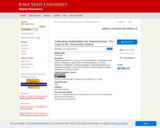
Cultivating stakeholders is a critical part of event management. This application activity covers the following four-stage process for involving stakeholders in an event: identification of stakeholders, classifying stakeholders, assessing stakeholders, and maintaining stakeholders. A case study is provided for students to apply to cultivating stakeholders in an industry example.
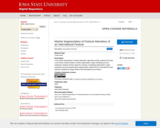
In the market segmentation of festival attendees’ application activity, students will review a mini-lecture material related to market segmentation, target marketing, and event positioning. Students will then apply the concepts of marketing segmentation, target marketing, and event positioning by analyzing data collected from an international music festival to establish the target market of the international music festival.
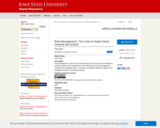
Risk management is a critical part of event management. This worksheet covers definitions of the key aspects of risk management and the steps taken by event management in creating a risk management plan. A case study is provided for students to apply the risk management process in an industry example.
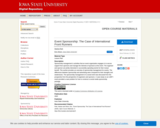
Sponsorship management is activities that an event organization engages in to secure support from sponsors and manage the interests of sponsors at the event. The organizer and sponsor are jointly interested in successfully operating events for their mutual benefit. This section provides an overview of sponsorship management for events. The differences between sponsorship and advertising were compared for their strengths and weaknesses. The sponsorship management of a social event was discussed from the prospective from the perspective of organizers and sponsors. A case study on an LGBT+ event provided a case problem for how to construct a social media sponsorship package.
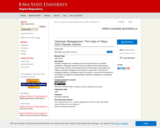
Volunteer management is an integral part of any event that relies on volunteer contributions. Managing volunteers for events is related to three related domains: events, human resources, and volunteering. Each of the domains is discussed for its relation to volunteer management in the context of a sporting event. The practice of managing volunteers is considered in terms of its phases. A real-life case is provided so that students can apply their understandings of volunteer management in resolving the case problems.
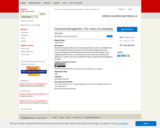
Financial management helps an event planning operation to achieve a profitable future in the competitive business environment. Astute financial management involves securing, allocating and controlling financial resources held by the operation. Good budgeting practices ensure a successful outcome of an event that meets financial objectives. A real-life case study is provided for students to apply financial management principles.
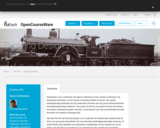
Ontwerpen is een combinatie van logisch redeneren en het creatief combineren van bestaande technieken om tot nieuwe, innovatieve ideeen te komen. Een goede werktuigkundig ontwerper put zijn creativiteit uit kennis van een groot aantal bestaande werktuigbouwkundige systemen. Hoe groter die kennis, hoe groter de kans dat nieuwe, innovatieve ontwerpconcepten ontstaan. Vooral kennis over niet-conventionele techniek bevordert dit creatieve ontwerpproces.
Het doel van het vak Evolving Design is om studenten de onderhavige werkprincipes te tonen van een grote hoeveelheid niet-conventionele werktuigbouwkundige systemen. Er wordt hierbij zowel gekeken naar bijzondere ontdekkingen uit het verleden als uit het heden, met een blik op de toekomst. De ontwerpprincipes worden niet simpelweg opgesomd, maar geplaatst in hun fascinerende, historische ontwikkeling om te laten zien hoe de ontwerpers hun creativiteit en vernuft gebruik(t)en om goedwerkende oplossingen te vinden binnen de beperkingen van de beschikbare fabricageprocessen en beschermingsmogelijkheden (patenten). Veel oplossingen uit het verleden zijn klaar om te worden toegepast in de technologie van de toekomst!
Het vak richt zich primair op het kwalitatief beschrijven van de werkprincipes van bestaande technologieen, met de nadruk op bewegende mechanische constructies. Hoewel het kwantatief, in detail uitwerken van de kracht-bewegingsvergelijkingen niet het hoofddoel van het vak is, zijn mechanische vergelijkingen wel essentieel als zij leiden tot een beter begrip.

A hypothetical scenario is introduced in which the class is asked to apply their understanding of the forces that drive natural selection to prepare a proposal along with an environmental consulting company to help clean up an area near their school that is contaminated with trichloroethylene (TCE). Students use the Avida-ED software application to test hypotheses for evolving (engineering) a strain of bacteria that can biodegrade TCE, resulting in a non-hazardous clean-up solution. Conduct this design challenge activity after completion of the introduction to digital evolution activity, Studying Evolution with Digital Organisms.
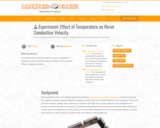
In this activity, students will learn how the conduction velocity of a nerve is dependent on temperature and will directly measure conduction veloicty under two different temperature conditions. The resource, ''Effect of Temperature and CV (doc)'' included in "Lesson 3 Neurophysiology and Neuropharmacology" is a part of "Unit 01 Intro to neuroscience" included in Health & Life Sciences HLS - Course 4.

In this lab, students will learn how to measure the conduction velocity of a spike using an earthworm. The resource, ''Conduction Velocity (pdf)'' included in "Lesson 3 Neurophysiology and Neuropharmacology" is a part of "Unit 01 Intro to neuroscience" included in Health & Life Sciences HLS - Course 4.
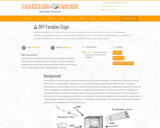
In this lesson, students will investigate electromagnetic interference. They will also build their own Faraday cage. The resource, ''Faraday Cage (pdf)'' included in "Lesson 3 Neurophysiology and Neuropharmacology" is a part of "Unit 01 Intro to neuroscience" included in Health & Life Sciences HLS - Course 4.
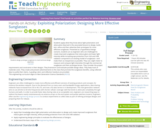
Students apply what they know about light polarization and attenuation (learned in the associated lesson) to design, build, test, refine and then advertise their prototypes for more effective sunglasses. Presented as a hypothetical design scenario, students act as engineers who are challenged to create improved sunglasses that reduce glare and lower light intensity while increasing eye protection from UVA and UVB radiation compared to an existing model of sunglasses—and make them as inexpensive as possible. They use a light meter to measure and compare light intensities through the commercial sunglasses and their prototype lenses. They consider the project requirements and constraints in their designs. They brainstorm and evaluate possible design ideas. They keep track of materials costs. They create and present advertisements to the class that promote the sunglasses benefits, using collected data to justify their claims. A grading rubric and reflection handout are provided.
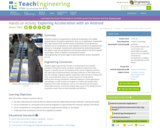
Students conduct an experiment to study the acceleration of a mobile Android device. During the experiment, they run an application created with MIT's App Inventor that monitors linear acceleration in one-dimension. Students use an acceleration vs. time equation to construct an approximate velocity vs. time graph. Students will understand the relationship between the object's mass and acceleration and how that relates to the force applied to the object, which is Newton's second law of motion.

In this activity, students will explore two given websites to gather information on Bone Mineral Density and how it is measured. They will also learn about X-rays in general, how they work and their different uses, along with other imaging modalities. They will answer guiding questions as they explore the websites and take a short quiz after to test the knowledge they gained while reading the articles.

Students observe multiple examples of capillary action. First they observe the shape of a glass-water meniscus and explain its shape in terms of the adhesive attraction of the water to the glass. Then they study capillary tubes and observe water climbing due to capillary action in the glass tubes. Finally, students experience a real-world application of capillary action by designing and using "capillary siphons" to filter water.
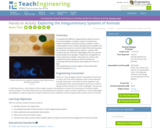
To evaluate the different integumentary systems found in the animal kingdom, students conduct an exploratory research-based lab. During the activity, students create a model epidermis that contains phosphorescent powder and compare the results to a control model. After learning about the variations of integumentary systems—systems that comprise the skin and other appendages that act to protect animal bodies from damage—students act as engineers to mimic animal skin samples. Their goal is to create a skin sample that closely represents the animal they are mimicking while protecting the base ‘epidermis’ from UV light.
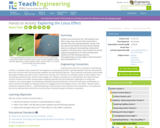
Students test and observe the "self-cleaning" lotus effect using a lotus leaf and cloth treated with a synthetic lotus-like superhydrophobic coating. They also observe the Wenzel and Cassie Baxter wetting states by creating and manipulating condensation droplets on the leaf surface. They consider the real-life engineering applications for these amazing water-repellent and self-cleaning properties.
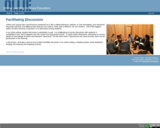
Facilitating Discussions
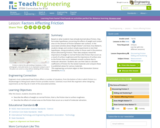
Based on what they have already learned about friction, students formulate hypotheses concerning the effects of weight and contact area on the amount of friction between two surfaces. In the Associated Activities (Does Weight Matter? and Does Area Matter?), students design and conduct simple experiments to test their hypotheses, using procedures similar to those used in the previous lesson (Discovering Friction). An analysis of their data will reveal the importance of weight to normal friction (the friction that occurs as a result of surface roughness) and the importance of surface area to the friction that occurs between smooth surfaces due to molecular attraction. Based on their data, students will also be able to calculate coefficients of friction for the materials tested, and compare these to published values for various materials.